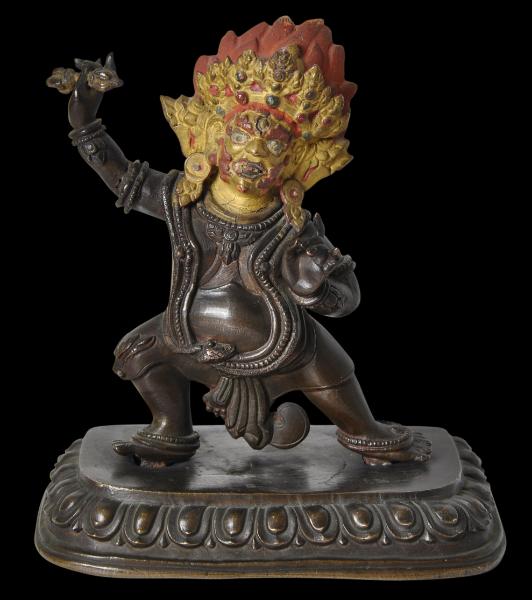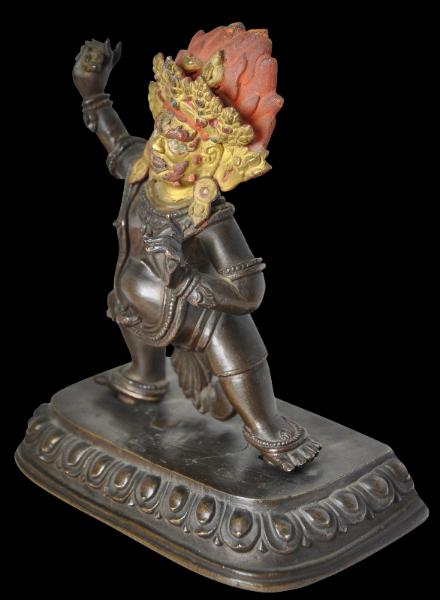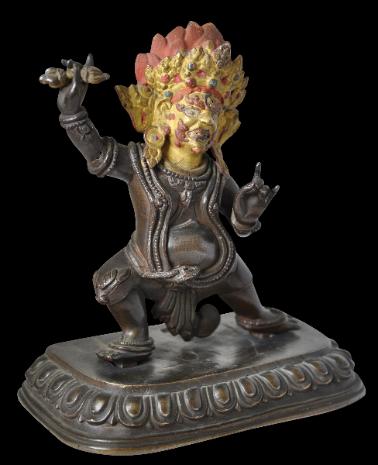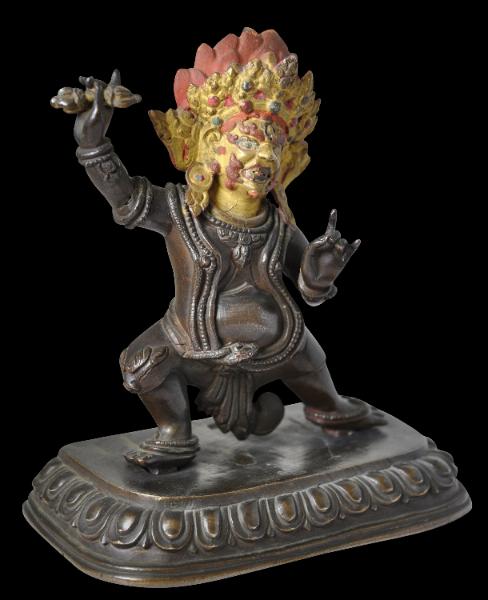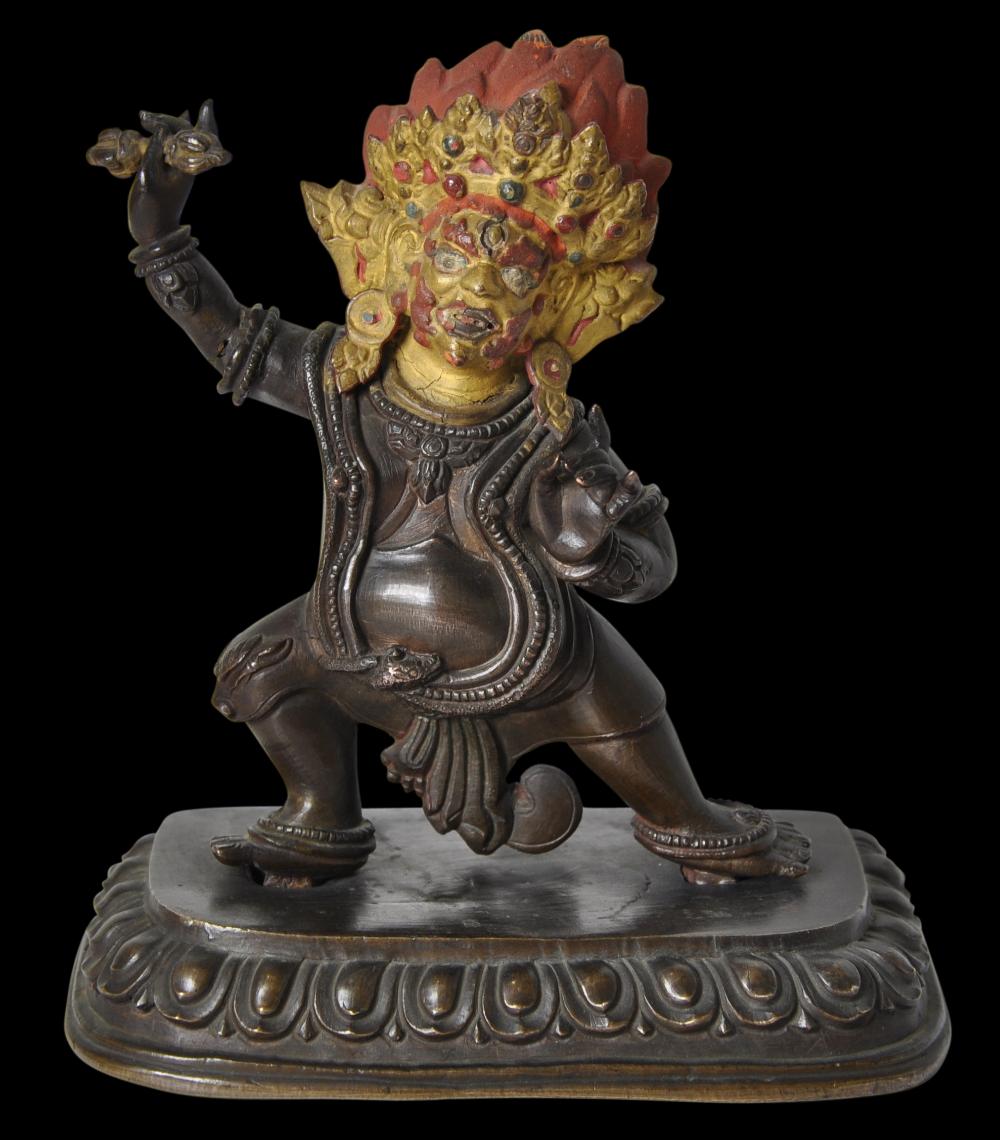
Sino-Tibetan Vajrapani, 18th century
Vajrapani
Tibet or China
18th century
height: 14cm, width: 12.6cm
This sino-Tibetan bronze figure of Vajrapani dates to the 18th century. Vajrapani stands in the warrior pratayalidha pose on a lotus base and holds a vajra in his raised right hand. His waist and neck are adorned with a draped naga. The animal’s snake-like head rests on the lower right part of the figure’s stomach. The neck is also festooned with beaded jewels and an elaborate floral pendant. These are matched by anklets, arm bands, bracelets and a pair of long, elaborate earrings.
A tiger skin is wrapped about the figure’s waist, with the head of the tiger stretched over the figure’s right knee.
Vajrapani’s face and headdress are decorated in gilt and polychrome. The face is wrathful and ferocious, with a third eye, and flaming brows surmounted by a five pointed tiara and hair in flames centred by a
vajra.
Vajrapani is one of the earliest-appearing
bodhisattvas in Mahayana Buddhism. He serves as the protector and guide of the Buddha and symbolises the Buddha’s power.
The bronze figure here is in fine condition. Two holes at the back of the platform on which the figure stands suggest that there would have been an aureole or backing plate but, as is often the case, this has been lost. A consecration niche can be seen on the figure’s back. It does not appear to have been opened.
References
Beer, R., The Encyclopedia of Tibetan Symbols and Motifs, Serindia, 2004.Provenance:
UK art market; private collection, Denmark
Inventory no.: 3158
SOLD

